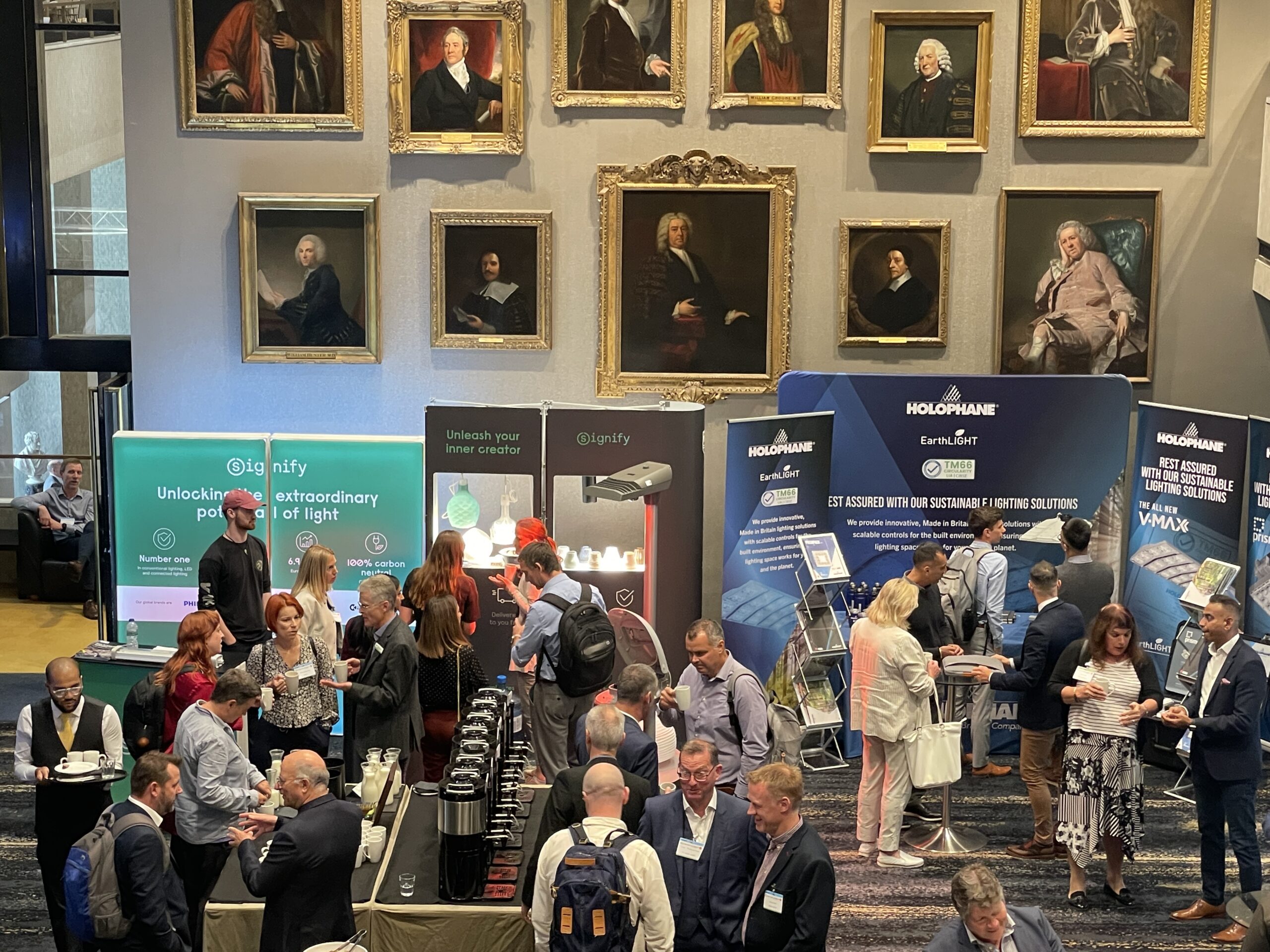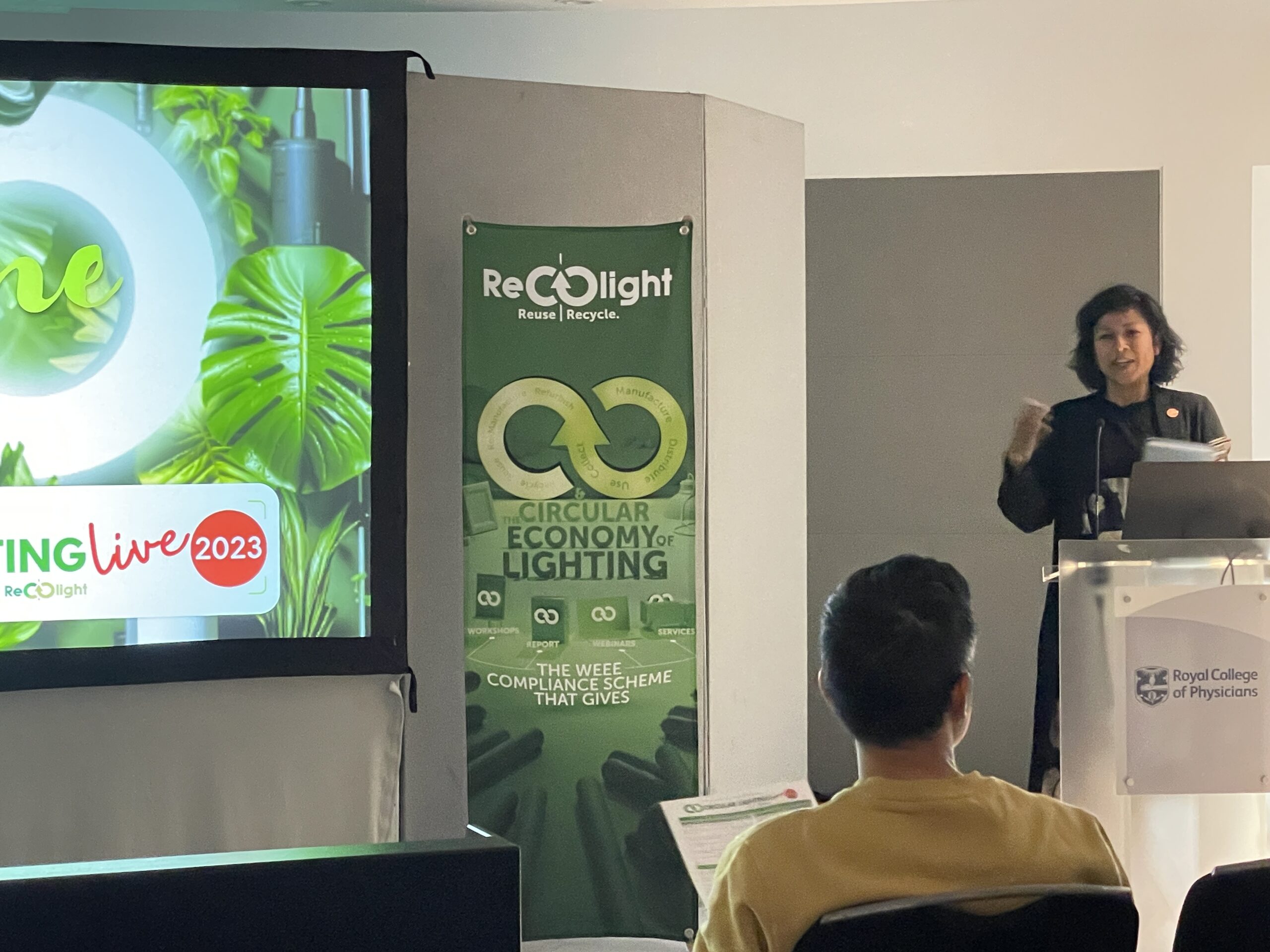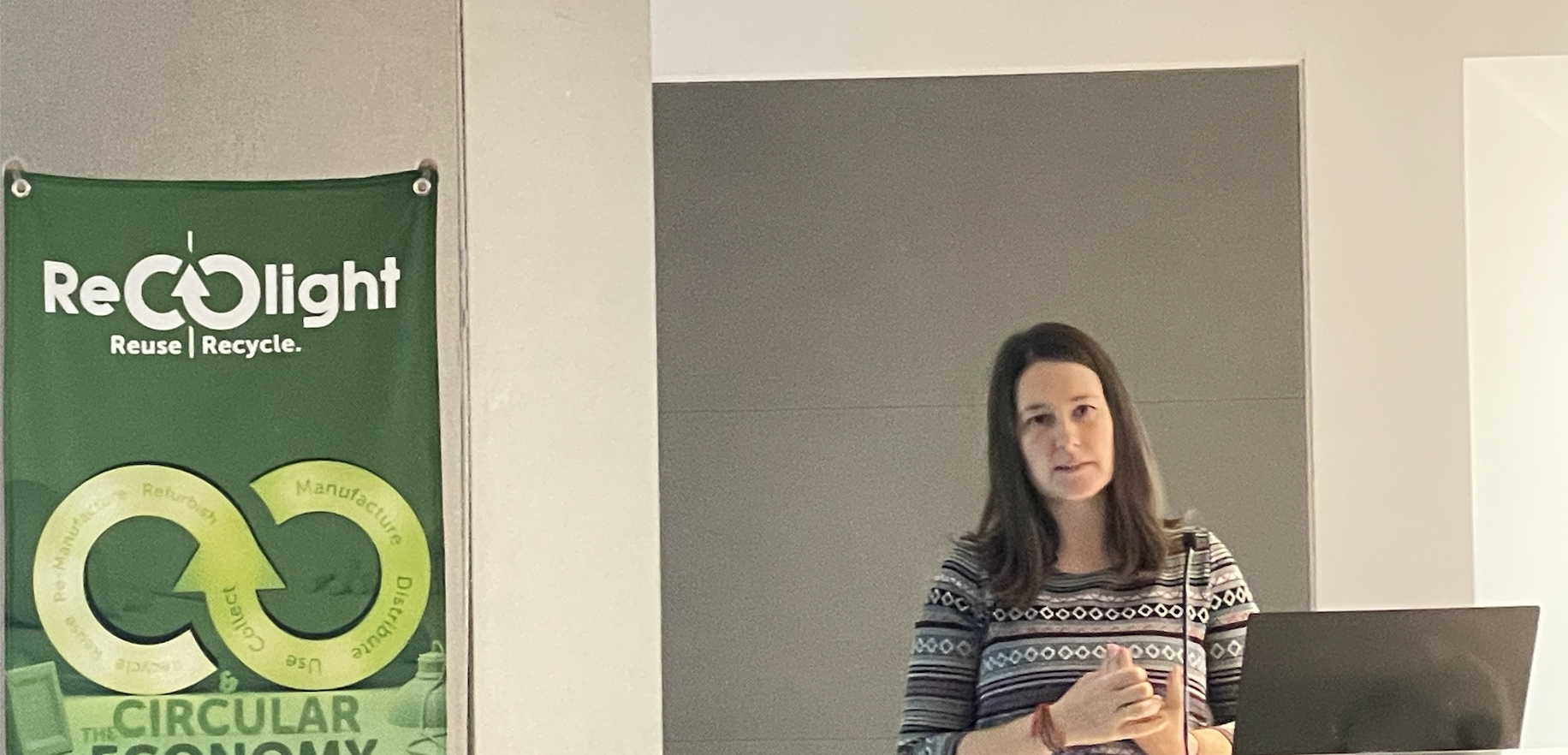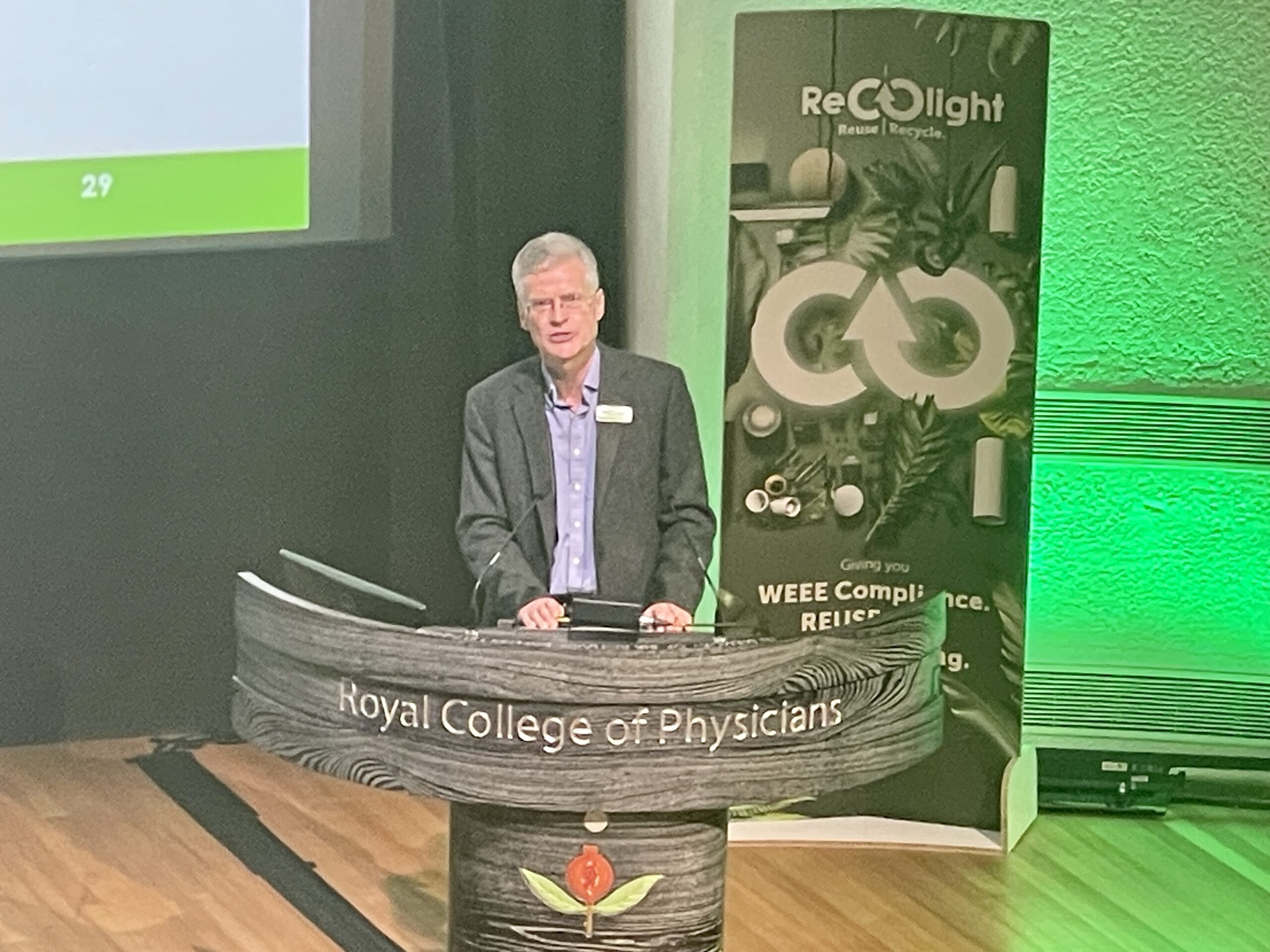Designinglighting.com to host links to EPD’s and DECLARE documents
Below is a brief summary from London’s Circular Lighting Live 2023. The full report and more analysis will be in the October issue of designing lighting (dl) magazine.
Your cheery humble editor attended the Circular Lighting Live Conference in London last week, which coincidentally occurred during Climate Week NYC and it was a splendid affair. Recolight hosted the event and designing lighting global (dlg) editor Ray Molony was the master of ceremonies. The venue was at the prestigious Royal College of Physicians, which doubles as a museum, thus the beautiful paintings in the background.

There was much consternation at this event over UK Prime Minister Rishi Sunak’s surprise speech announcing delays to several key pledges aimed at cutting greenhouse gas emissions. Despite this U-turn on climate policy that occurred the day before the conference, there seemed to be consensus that the UK leads the G7 countries when it comes to action around embodied carbon.
During the early part of my career, Europeans led the lighting industry. They designed better, smaller, higher quality, more energy efficient lighting products than their US counterparts. Their energy costs were significantly higher, and they were greener, so it made sense. In 2007, the LED boom began, and I felt that the US took the technology lead. If not, we at least held our own. Afterall, we had Silicon Valley and DOE money.
Now, the table has turned and Europe, especially the UK, is leading on the circular lighting economy. While attending this show, I realized just how far behind we are in the US, especially with our standards and recommended practices. However, both IES and PNNL are hard at work on the subject. In addition, both organizations are having meaningful dialogue with their EU counterparts and that could expedite our process. We will have details about their roles in designing lighting’s (dl) October issue. Meantime, companies that have created EPD’s or DECLARE labels can submit links to [email protected] and we will publish at designinglighting.com.

At the forefront of this dialog in the US is Leela Shanker of Borealis Lighting Studio, the Greenlight Alliance, the Flint Collective NYC, and the brain behind the LifeCycle incubator. She is pushing the needle further for the world—and the U.S.
Leela moderated and spoke in the Lighting Designer track at the conference. She emphasized the importance of Life Cycle Analysis (LCA) and Environment Product Declarations (EPD), particularly in the context of the U.S., where companies are beginning to adopt the Declare system but need to also focus on EPDs. Shanker laid out the significance of EPDs, contrasting them with DECLARE labels, which focus mainly on toxic materials. EPDs, she emphasized, also take into account energy usage.
Shanker explained the GreenLight Alliance’s success, which currently boasts 231 participants including 30 manufacturers from North America, Europe and Australia. The GreenLight Alliance plans to publish EPDs from 5 types of generic fixtures and this can be used as a benchmark for specifiers. Greenlight has also issued a document with generic but meaningful language to help designers protect their specifications. Leela explained, “The last thing we want is for a designer to do all of this work and then have it value-engineered out of the design.”
Part of the UK’s success has to do with strong leadership from the CIBSE and their technical memorandums:
- TM54 Evaluating Operational Energy Use at the Design Stage
- TM 65: Quantified Carbon at the product level (does not include energy used at the system level)
- TM65.2 Embodied Carbon for Building Services—Lighting. Also has an embodied carbon calculator to determine:
- Product weight (kg)
- Material composition breakdown for 95% (min) of product weight
- Product service life (years)
- Assumed proportion of factory energy used associated with the product (kWh)
- Final assembly location (country or region)
- TM 66: Quantified Circularity
- CEAM: Circular Economy Assessment Method
Both the TM65 and TM66 are “verified” or approved by the LIA. Also, TM65.2 has support from many manufacturers including eldoLED, TARGETTI, and Designplan Lighting to name a few.

Kristina Allison of Atkins Realis gave a talk entitled, “Lighting Metrics for Designers—Circular Economy, Embodied Carbon…and More.” Kristina explained that the numbers are like calories. Just as a consumer can decide about what foods to eat based on caloric intake, a lighting designer can take a decision as to product specifications based on quantifiable numbers from TM65.2.
Even as debates around climate policy rage on in America, there’s wide agreement—from the most conservative to the most liberal—that adopting a circular economy and minimizing waste makes good business sense. The bad news is that the US is significantly behind the UK. The good news is that the US is significantly behind the UK, giving our manufacturers and designers the opportunity to influence policy.




